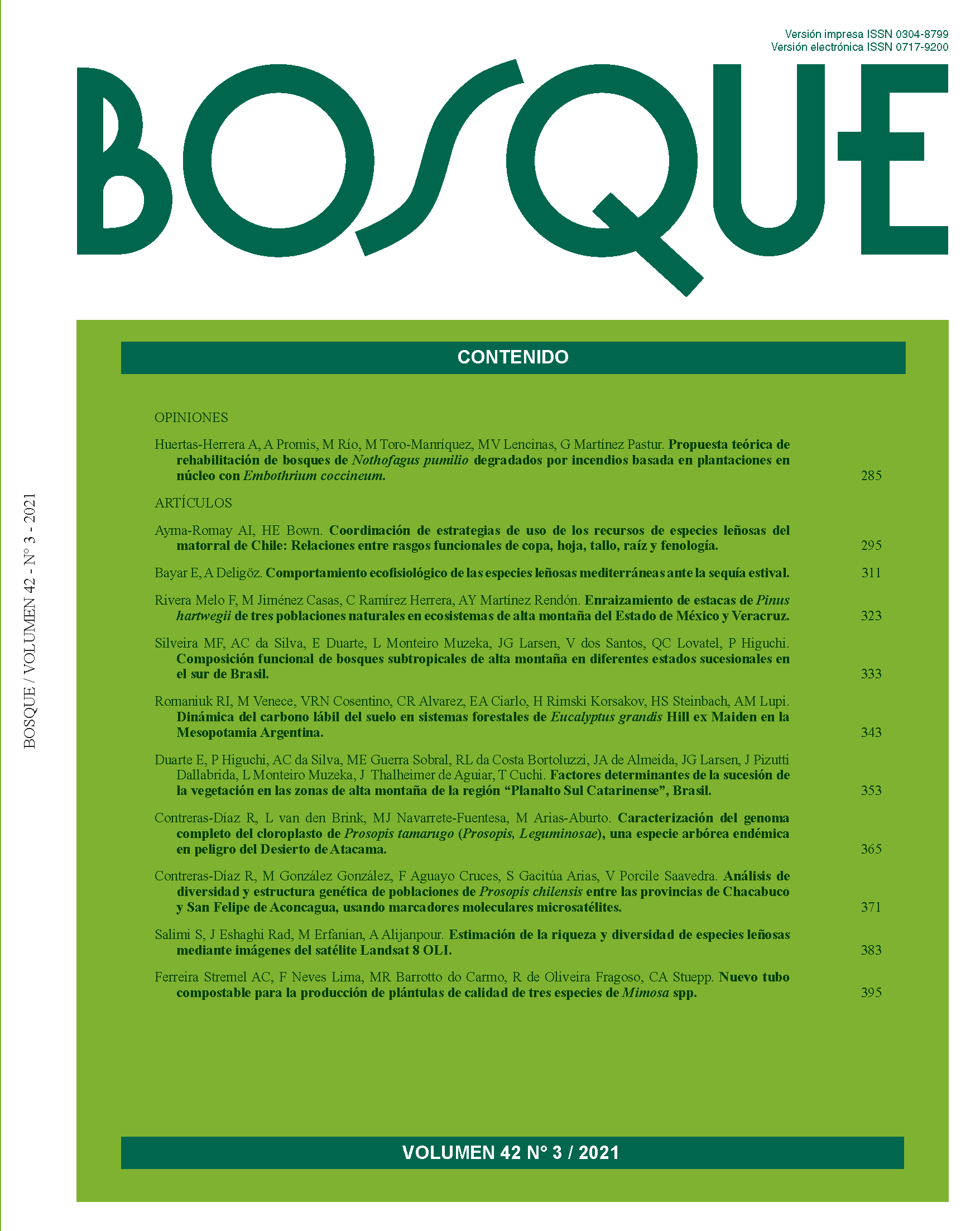Resource-use strategy coordination across woody species of the Chilean matorral: Relationships among functional traits of crown, leaf, stem, root and phenology
Main Article Content
Abstract
Variation of functional traits among species allows evaluating their life strategies. The whole-plant economic spectrum proposes coordination of the form and function across different plant organs to optimize a resource-use strategy. However, few studies have evaluated the coordination among woody species through functional traits from different plant organs. We evaluated variation and coordination of crown, leaf, stem, root and phenology trait values across woody species of the semi-arid Mediterranean matorral of Chile. We hypothesize that sclerophyllous and malacophyllous woody species vary and coordinate their trait values along an ecological dimension that separates their resource-use strategies from conservative to acquisitive, respectively. We analyzed the variation and correlation of 14 functional traits for 12-16 species. The functional trait values between sclerophyllous and malacophyllous species did not differ across the whole-plant economic spectrum. Traits were coordinated along multiple ecological dimensions. The first dimension was associated with the leaf economic spectrum and plant morphology, yet differed between sclerophyllous and malacophyllous species. Sclerophyllous species combined mostly conservative foliar trait values (longer leaf life span) with acquisitive morphological trait values (larger maximum plant height and longer lateral extension of roots), while malacophyllous species exhibited opposite combinations. The second dimension was associated with variation in phenology and root traits. This dimension separated species with conservative phenological and root trait values (delayed growth onset and deeper rooting depth) from opportunistic species with opposite trait values. The third dimension was coordinated by wood density and the leaf 13C - isotopic composition. This dimension separated the drought-tolerant species with high stem densities and higher leaf water use efficiency from opportunistic water-use species with opposite attributes. In contrast with our hypothesis, in the Chilean matorral the species can combine conservative and acquisitive trait values to use resources and coordinate their resource use strategies across multiple dimensions. This decoupling of plant strategies could occur because different organs and phenology are exposed to different environmental filters.

